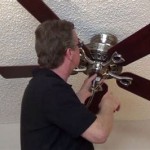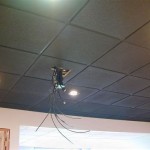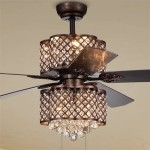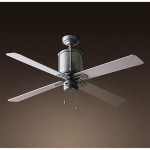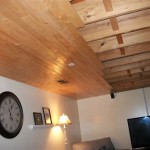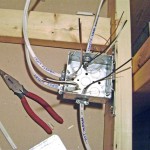Loft Beds For Low Ceilings: Maximizing Space In Your Homes
Loft beds, traditionally associated with high-ceilinged dorm rooms and spacious apartments, are increasingly being recognized as a valuable space-saving solution even for homes with low ceilings. The key lies in understanding the nuances of loft bed design and selecting models specifically engineered to optimize vertical space without compromising comfort or safety. This article explores the considerations for integrating loft beds into environments with limited headroom, highlighting the various types available, safety precautions, and strategies for maximizing functionality.
The concept of a loft bed involves elevating the sleeping area, thereby freeing up the floor space beneath for other purposes. In homes with low ceilings, this inherently presents a challenge. The distance between the bed platform and the ceiling becomes a crucial factor, directly affecting the occupant's comfort. Success in utilizing loft beds in low-ceilinged rooms requires careful planning and a keen eye for detail.
Understanding Low-Profile Loft Beds
The primary adaptation that makes loft beds suitable for low ceilings is the 'low-profile' design. These beds are constructed with a significantly reduced height compared to standard loft beds. The mattress platform is positioned closer to the floor, minimizing the vertical space required. This allows for sufficient headroom above the mattress while still freeing up valuable floor space below. Low-profile loft beds often feature a minimalist design, focusing on functionality rather than elaborate aesthetics. They prioritize maximizing clearance both above and below the bed.
The dimensions of a low-profile loft bed are critical. Before purchasing, it is essential to accurately measure the room's ceiling height and the desired height of the activity space below. Consider the thickness of the mattress and the user's height when sitting in bed. Ideally, there should be enough space to sit comfortably without hitting one's head, although some degree of stooping might be unavoidable in particularly low-ceilinged rooms.
The space created beneath a low-profile loft bed is still quite usable. It can accommodate a small desk, a reading nook, storage solutions like drawers or shelves, or even a cozy seating area. The specific use will depend on the height available and the overall needs of the room's occupant.
Safety Considerations For Low-Ceiling Loft Beds
Safety is paramount when incorporating any type of loft bed, and extra precautions are necessary when dealing with low ceilings. The reduced height can increase the risk of bumping one's head while getting into or out of bed. Furthermore, the close proximity to the ceiling can affect ventilation and potentially increase the feeling of confinement.
Guardrails are an indispensable safety feature. They should be securely attached along all open sides of the bed platform, preventing accidental falls during sleep. The height of the guardrails should be sufficient to contain the occupant, even when tossing and turning. In the case of low-profile loft beds, ensure the guardrails do not further reduce the already limited headroom.
The ladder or staircase used to access the bed should be sturdy and securely attached to the frame. Consider the angle of the ladder; a steeper angle saves space but can be more challenging to climb. Stairs offer a more gradual ascent and descent but require more floor space. Handrails on the ladder or stairs are essential for added safety.
Proper ventilation is another crucial aspect. Ensure that the room is adequately ventilated to prevent stuffiness, particularly during warmer months. A ceiling fan or strategically placed air purifier can help circulate air and maintain a comfortable sleeping environment.
The weight capacity of the loft bed should be carefully considered. Adhere to the manufacturer's specifications and avoid exceeding the maximum weight limit. A sturdy frame constructed from durable materials is essential for safety and longevity.
Optimizing Functionality and Design
Beyond the structural and safety considerations, maximizing the functionality and design of a low-ceiling loft bed involves incorporating smart storage solutions and choosing a style that complements the room's overall aesthetic. The space underneath the bed can be transformed into a highly functional area with careful planning.
Built-in storage is an excellent way to maximize space. Consider drawers, shelves, or cabinets integrated directly into the bed frame. This eliminates the need for separate storage units, freeing up even more floor space. These storage solutions can be used to store clothing, books, or other personal belongings.
A well-placed desk can create a dedicated workspace underneath the loft bed. Choose a desk that fits comfortably within the available space and provides adequate surface area for work or study. Proper lighting is essential for a functional workspace; consider a task lamp or adjustable overhead lighting to ensure sufficient illumination.
The design of the loft bed should blend seamlessly with the room's decor. Choose a style that complements the existing furniture and color scheme. A minimalist design is often a good choice for smaller rooms, as it helps to create a sense of spaciousness. Consider the material of the bed frame; wood, metal, or a combination of both can be used to achieve different aesthetic effects.
The color palette of the room can also contribute to the feeling of spaciousness. Light, neutral colors tend to make a room feel larger and more airy. Avoid dark or overly saturated colors, which can make a small room feel cramped. Mirrors can also be used to create the illusion of more space.
Clever lighting solutions can enhance the functionality and ambiance of the space under the loft bed. String lights, LED strips, or pendant lights can add a touch of warmth and style. Consider the placement of light fixtures to ensure adequate illumination for various activities.
The mattress choice is also important. A thinner mattress can provide a bit more headroom, but it should still offer adequate support and comfort. Consider the type of mattress (foam, spring, hybrid) and choose one that suits your sleeping preferences.
Finally, remember to keep the area around the loft bed clutter-free. A tidy and organized space will feel more spacious and inviting. Regular decluttering and smart storage solutions are essential for maintaining a comfortable and functional living environment.
By considering these factors, a loft bed can be successfully integrated into even the smallest and lowest-ceilinged rooms, providing a versatile and space-saving solution without sacrificing comfort or safety. Careful planning and attention to detail are key to maximizing the potential of this innovative furniture design.
:max_bytes(150000):strip_icc()/Burtt-Childrens-Bedroom-5-261aa1a7d40348c5afbd4ff0e1fef8bd.jpeg?strip=all)
28 Loft Style Bedroom Ideas To Maximize Your Space

Loft Bed Ideas For Grown Ups Living In Small Spaces Streeteasy

Diy Loft Bed Ideas For Small Rooms Home Texture

Full Low Loft Bed With Stairs Maxtrix Kids

Loft Bed Ideas For Grown Ups Living In Small Spaces Streeteasy

Best Loft Beds 2024 Forbes Vetted

9 Loft Bedroom Ideas To Elevate Small Spaces Saatva

17 Marvelous Space Saving Loft Bed Designs Which Are Ideal For Small Homes Bunk Design Bedroom
:max_bytes(150000):strip_icc()/02-XL-low-0cf2f69ee23d445bb638003aa35da6c8.jpg?strip=all)
28 Loft Style Bedroom Ideas To Maximize Your Space

Loft Bed Ideas For Low Ceiling Spaces
Related Posts

